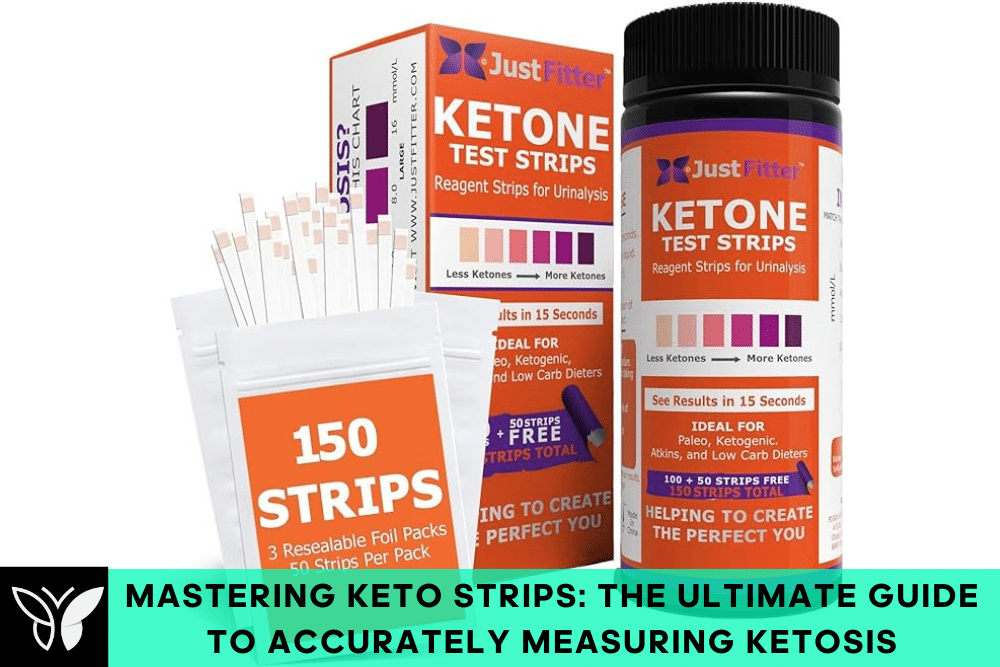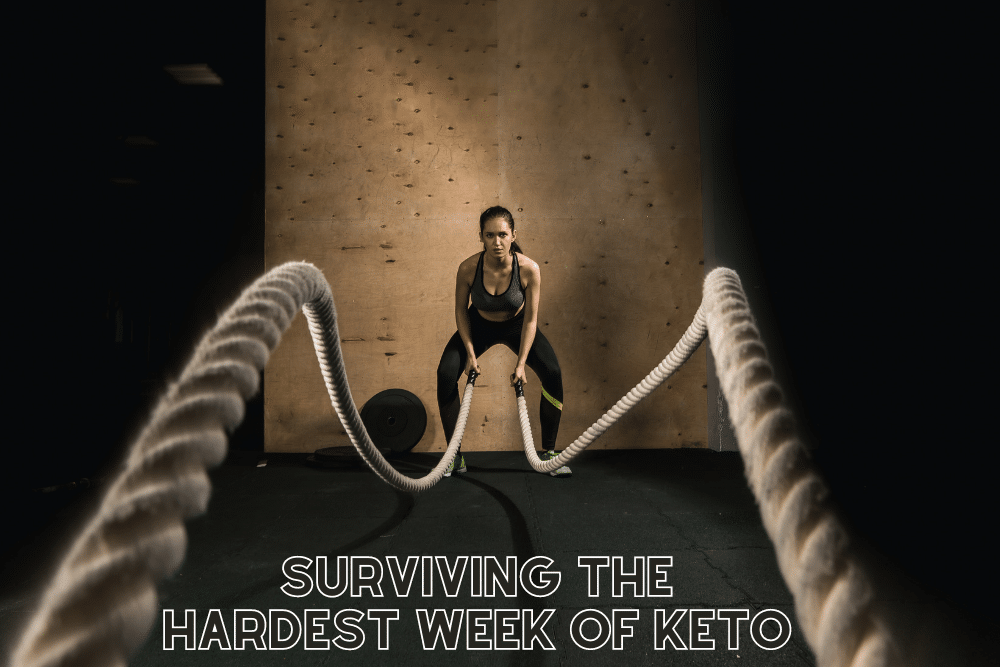Embarking on a ketogenic, or keto, diet has become a transformative journey for many, particularly among women seeking effective weight loss and enhanced health benefits. This low-carb, high-fat diet shifts your body into a state of ketosis, where fat becomes the primary fuel source, leading to impressive results in both physique and well-being. The keto diet’s popularity among women is not just due to its potential for significant weight loss but also for its myriad health benefits, from increased energy levels to improved blood sugar control.
However, a key aspect often overlooked in pursuing these benefits is the importance of understanding keto calorie intake for women. While the keto diet can feel liberating due to its satisfying meals and lack of strict calorie counting seen in other diets, being mindful of the keto calorie intake for women is crucial for maximising weight loss and achieving optimal health outcomes. This blog demystifies keto calorie intake for women, providing you with the insights and guidance needed to navigate your keto journey effectively.
Understanding Calorie Needs

When embarking on your keto journey, grasping the unique keto calorie intake for women is pivotal. Calorie needs aren’t one-size-fits-all; they fluctuate based on several personal factors, including age, weight, activity level, and specific weight loss objectives. Understanding this individuality ensures that the keto calorie intake for women aligns perfectly with your lifestyle and goals, maximising the effectiveness of your keto diet.
Age: Metabolic rate tends to slow down as you age due to muscle mass loss and hormonal changes. This shift means older women may require fewer calories than their younger counterparts to maintain weight.
Weight: Your current weight plays a significant role in determining calorie needs. More body mass requires more energy (calories) to sustain, thus affecting women’s keto calorie intake.
Activity Level: Your daily activity level dramatically impacts your calorie requirements. Sedentary lifestyles need fewer calories, while active ones require more to fuel the body’s increased energy demands.
Weight Loss Goals: If weight loss is your goal, creating a calorie deficit by consuming fewer calories than you burn is essential. However, this deficit should be carefully calculated to ensure it’s sustainable and doesn’t compromise nutritional needs.
An essential tool in understanding the keto calorie intake for women is calculating your Basal Metabolic Rate (BMR). BMR represents the calories your body needs to perform essential life-sustaining functions like breathing, circulation, and cell production. Various formulas exist for calculating BMR, with the Harris-Benedict Equation being among the most popular for women:
⮕ BMR = 655 + (9.6 x weight in kg) + (1.8 x height in cm) – (4.7 x age in years)
Remember, this calculation provides an estimate of your calorie needs at rest. Adjustments should be made based on your activity level and specific goals, giving you a more accurate picture of the keto calorie intake for women.
Adjusting your calorie intake based on these factors and monitoring your progress is dynamic. It might require periodic reevaluation, especially as you lose weight, increase your activity level, or undergo lifestyle changes. Utilising resources like online calculators or consulting with a healthcare professional can provide additional insights and tailor the keto calorie intake for women more precisely to your needs.
Keto Macros 101

Navigating your macronutrient distribution, or ‘macros,’ is foundational to optimising the keto calorie intake for women. The ketogenic diet’s hallmark is its unique macro ratio, emphasising high fat, moderate protein, and low carbohydrate intake. Understanding and balancing these macros is critical to fueling your body correctly, supporting ketosis, and achieving your health and weight loss goals.
⮕ High Fat: Fat should comprise most of your calorie intake, typically around 70-80%. This high fat intake sets keto apart, encouraging your body to enter and remain in ketosis, which burns fat for fuel instead of carbohydrates. Sources of healthy fats include avocados, olive and coconut oils, butter, and fatty fish.
⮕ Moderate Protein: Protein is set at a moderate level, usually around 20-25% of your daily calories. It’s essential for muscle maintenance and repair but kept moderate to prevent excess protein from converting into glucose, which could kick you out of ketosis. Good protein sources are meat, fish, eggs, and dairy products.
⮕ Low Carb: Carbohydrates are significantly reduced, making up 5-10% of your daily caloric intake. Limiting carbs is crucial for maintaining ketosis. Focus on consuming low-carb vegetables like leafy greens, broccoli, and cauliflower, and be mindful of hidden carbs in sauces and processed foods.
Balancing Keto Macros within Your Calorie Intake
- Track Your Intake: Using a food tracking app or journal can help ensure you stay within your macro ratios and keto calorie intake for women. Pay attention to serving sizes and read labels carefully.
- Adjust Based on Results: If you do not see the desired results or experience energy slumps, consider adjusting your macros slightly. Some women may need to tweak their fat or protein intake to find what works best for their bodies.
- Listen to Your Body: Your body’s signals are crucial beyond numbers. Hunger, energy levels, and how you feel overall can guide you in effectively adjusting your macro balance.
Mastering your keto macros isn’t just about hitting numbers; crafting a diet that fuels your body efficiently, supports your ketogenic journey, and leads you towards your desired health outcomes. By understanding the keto calorie intake for women, you’re setting the stage for success on the keto diet.
How to Calculate the Keto Calorie Intake for Women

Calculating the keto calorie intake for women is a vital step in personalising your ketogenic diet to meet your specific health and weight loss goals. Here’s a step-by-step guide to determine your personalised keto calorie needs and tips for creating a calorie deficit that supports weight loss without compromising your nutritional intake.
Step-by-Step Guide to Calculating Keto Calorie Intake for Women
1. Determine Your Basal Metabolic Rate (BMR): Start by calculating your BMR, the number of calories your body needs to perform essential functions at rest. You can use the Harris-Benedict Equation tailored explicitly for women: BMR = 655 + (9.6 x weight in kg) + (1.8 x height in cm) – (4.7 x age in years).
2. Adjust for Activity Level: Multiply your BMR by the appropriate activity factor to account for your daily activity level:
⮕ Sedentary (little or no exercise): BMR x 1.2
⮕ Lightly active (light exercise/sports 1-3 days/week): BMR x 1.375
⮕ Moderately active (moderate exercise/sports 3-5 days/week): BMR x 1.55
⮕ Very active (hard exercise/sports 6-7 days a week): BMR x 1.725
⮕ Extra active (very hard exercise/sports & a physical job): BMR x 1.9
This gives you an estimate of the total calories you need daily to maintain weight.
3. Create a Calorie Deficit for Weight Loss: To lose weight, you’ll need to consume fewer calories than this maintenance number. A safe and sustainable deficit is typically around 500 calories less than your maintenance calories, leading to a gradual weight loss of about 1 pound per week.
Tips for Creating a Calorie Deficit Without Sacrificing Nutrition
- Focus on Nutrient-Dense Foods: Prioritise foods that are high in nutrients but lower in calories. Avocados, leafy greens, and lean proteins are excellent choices.
- Control Portion Sizes: Be mindful of portion sizes, especially for high-calorie foods like nuts and cheeses.
- Incorporate Intermittent Fasting: Many successfully combine keto with intermittent fasting, which can naturally reduce calorie intake and boost ketosis.
- Stay Hydrated: Sometimes, thirst is mistaken for hunger. Drinking plenty of water can prevent unnecessary snacking.
By carefully calculating the keto calorie intake for women and creating a thoughtful calorie deficit, you can effectively lose weight while ensuring your body receives the nutrients it needs to thrive on a ketogenic diet. Remember, the goal is sustainable, healthy weight loss that supports your overall well-being.
Common Mistakes and How to Avoid Them

Navigating keto calorie intake for women can be a delicate balance. While the keto diet offers a flexible weight loss and health improvement approach, certain pitfalls can hinder progress. Recognising common calorie intake mistakes and learning to avoid them can significantly enhance your keto experience.
Common Mistakes Regarding Calorie Intake on Keto
- Underestimating Calorie Needs: Many women inadvertently consume too few calories, mistaking the keto diet’s appetite-suppressing effects for a green light to drastically reduce food intake. This can slow metabolism and hinder weight loss efforts.
- Over-Restricting Calories: Similarly, cutting calories too much, too quickly, can lead to nutritional deficiencies and energy depletion, making it harder to stick to the keto diet long-term.
- Ignoring Hunger Cues: Keto can alter your hunger signals, but neglecting your body’s natural cues for food can lead to under-eating and potential nutrient deficiencies.
- Overemphasis on Fat at the Expense of Other Nutrients: While fat is a critical component of the keto diet, neglecting adequate protein and micronutrient intake can negatively impact overall health.
Tips for Avoiding These Mistakes
- Listen to Your Body: Pay attention to hunger and fullness cues. If you’re feeling sluggish or constantly hungry, you may need to reassess your calorie intake.
- Calculate and Adjust Regularly: Use the keto calorie intake for women as a guideline, not a strict rule. Your calorie needs will change as you lose weight or increase your activity level.
- Ensure Nutritional Adequacy: Focus on a balanced intake of macros and micronutrients. Include a variety of low-carb vegetables, quality proteins, and healthy fats to cover your nutritional bases.
- Avoid Drastic Calorie Cuts: If weight loss is your goal, start with a moderate calorie deficit. Drastic reductions can be unsustainable and counterproductive.
- Incorporate Nutrient-Dense Foods: Opt for foods that provide the most nutritional bang for your buck. Avocados, leafy greens, nuts, seeds, and fatty fish are all excellent choices.
By being mindful of these common pitfalls and adopting strategies to avoid them, you can ensure the keto calorie intake for women supports your health and weight loss goals effectively. Remember, the keto diet is about more than just losing weight; it’s about nurturing your body with the proper nutrients to thrive.
Conclusion
Navigating your keto calorie intake for women with precision is paramount to harnessing the full potential of the ketogenic diet for optimal health and effective weight loss. Personalising your calorie intake ensures that the diet aligns with your body’s unique needs and supports your wellness goals, making your keto journey both sustainable and enjoyable. Understanding and adjusting your calorie intake based on activity level, metabolic rate, and personal health objectives are crucial steps in creating a keto diet plan that works best for you.
As you move forward, remember that while general guidelines provide a valuable framework, the most successful dietary plans are those tailored to the individual. Feel free to seek professional advice from nutritionists or healthcare providers specialising in ketogenic diets. They can offer insights and adjustments based on your health status, dietary preferences, and lifestyle, ensuring your keto plan is practical and nutritionally adequate.
➤ Embark on your keto journey with ease! Click here to access our curated section of all keto recipes, from breakfast to dinner, to support your health and weight loss goals.




